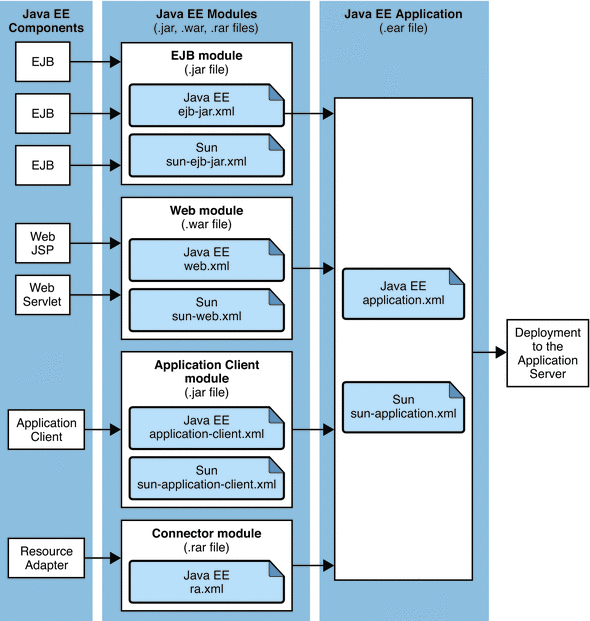About Applications
An application is a logical collection of one or more modules tied together by application annotations or deployment descriptors. Components can be assembled at either the module or the application level. Components can also be deployed at either the module or the application level.
EJB components are assembled in a JAR file with annotations or ejb-jar.xml and sun-ejb-jar.xml deployment descriptors. Web components are assembled in a WAR file with annotations or web.xml and sun-web.xml deployment descriptors. A SIP component is not Java EE standard, so to be deployed in an application it must be converged and assembled in a WAR file with sip.xml, sun-sip.xml, web.xml, and sun-web.xml deployment descriptors, or the equivalent annotations. An application client is assembled in a JAR file with application-client.xml and sun-application-client.xml deployment descriptors. A resource adapter is assembled in a RAR file with a ra.xml deployment descriptor. All modules are assembled in an EAR file and deployed to the Application Server. The following figure shows EJB JAR, Web, application client, and connector modules in a Java EE application.
Figure 1–2 Application Assembly and Deployment

Each Java EE module has an optional Communications Server deployment descriptor and annotations or a Java EE deployment descriptor. The Communications Server uses the annotations or deployment descriptors to deploy the application components and to register the resources with the Communications Server.
An application consists of one or more modules, an optional Communications Server deployment descriptor, and annotations or a Java EE application deployment descriptor. All items are assembled, using the Java ARchive (.jar) file format, into one file with an extension of .ear.
- © 2010, Oracle Corporation and/or its affiliates
